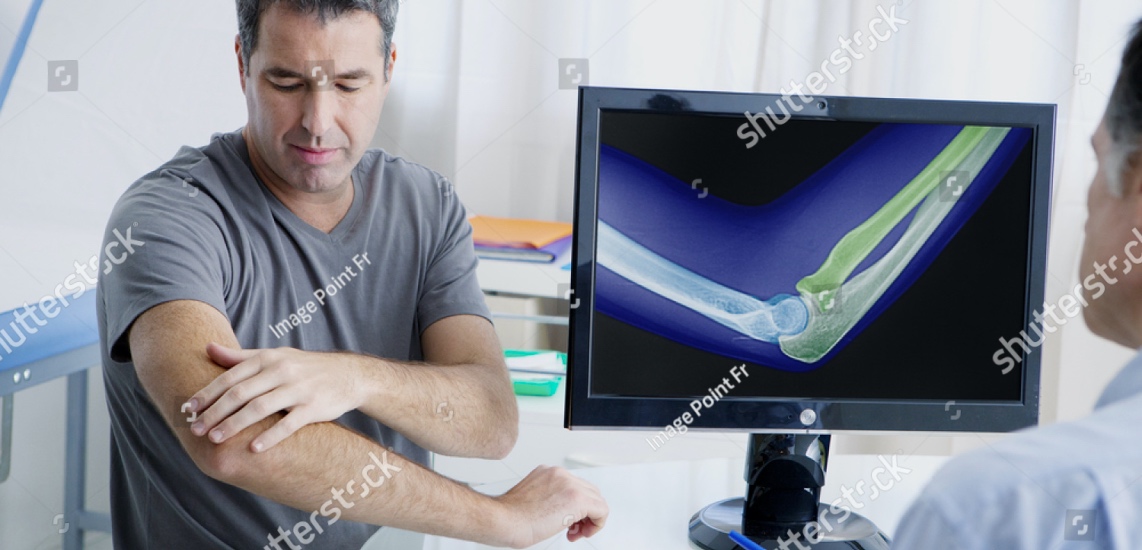What is a Rheumatologist?
A rheumatologist is a MEDICAL doctor who specialises in the diagnosis and treatment of arthritis and other diseases that affect joints, muscles and bones.
What do Rheumatologists treat?
Rheumatologists treat inflammation of joints, autoimmune diseases, musculoskeletal pain disorders and osteoporosis. There are a large number of these diseases which include rheumatoid arthritis, osteoarthritis, gout, lupus, back pain, osteoporosis, fibromyalgia and tendonitis.
Paediatric Rheumatologists treat people less than 16 years of age with these disorders. There are some rheumatic diseases which are especially prevalent in childhood.

When should you see a Rheumatologist?
If musculoskeletal pains are not severe or disabling and last just a few days, it would make sense to give the problem a reasonable chance to resolve. If however, the pain in the joints, muscles or bones is severe or persists for more than a few days, you should see your general practitioner. A referral to a Rheumatologist may be deemed necessary. Many types of rheumatic diseases are not easily identified in the early stages. Rheumatologists are trained to do the detective work necessary to discover the cause of swelling and pain. Some musculoskeletal disorders respond best to treatment in the early stages of the disease such as rheumatoid arthritis. Some diseases change over time. Rheumatologists work closely with patients to identify the problem and design an individualized treatment programme.

The Rheumatologist works closely with the GP and very often, with other clinicians, sometimes acting as a consultant to advise about a specific diagnosis and treatment plan. In other situations, the rheumatologist acts as a manager, relying upon the help of many skilled professionals including nurses, physiotherapists and occupational therapists and psychologists. Team work is important.
Procedures
Steroid joint injections
This is a minimally invasive procedure that is easily performed in the consulting room. It can be extremely helpful when there up to 3 joints that are inflamed and painful. The injection includes a long-acting corticosteroid (such are triamcinolone or methyl-prednislone and there is also usually a local anaesthetic. Pain relief will be achieved with 5-10minutes if the anaethetic is used and the benefit can be from days to years. The condition will often need additional physiotherapy, exercise and or medication for maximal benefit. Some joint injections are best arranged using ultrasound guidance (such as a hip injection) – these will be performed by a radiologist. It is advised that there is a 24hour period of joint rest after the procedure. Very rarely, there can be more pain after the injection, for the first 24hours, this is due to a reaction to the steroid crystals. It settles quickly. Steroid injections can be repeated, up to twice a year if needed.
The risks of steroid injections are rare. Inserting the needle can cause bleeding, infection, allergic reaction, headache, and nerve damage (very rare). Corticosteroid side effects may cause temporary flushing (hot flashes), mood swings or insomnia, and elevated blood sugar levels in diabetics. If the patient is taking anticoagulants for a clotting disorder, this needs to be discussed first and special precautions need to be taken.
Intra-muscular steroid
These injections are performed when the patient is having a ‘flare’ of their inflammatory disease. These can also be used as a bridge when commencing disease modifying therapy (for example methotrexate) as these drugs can take 4-6 weeks to be fully effective
Soft tissue / bursa injections
Long-acting steroid injection can be useful when there is localized inflammation such as trochanteric bursitis, tennis elbow or tendonopathy.
Hyaluronic acid injection to joints
This can be effective for osteoarthritis where there is no active inflammation. These are thought to work by replacing joint lubricant. These are safe but may need to be performed a few times in order to achieve full benefit. They too can be done in the consulting room



